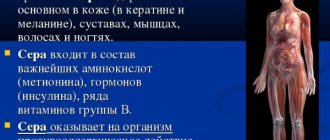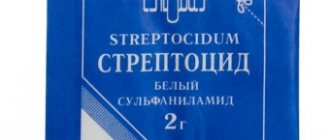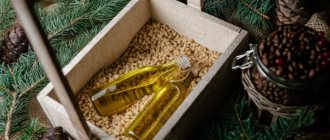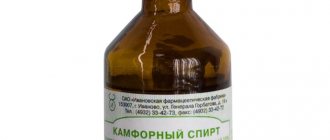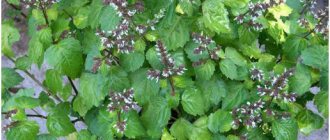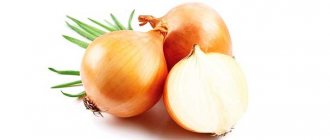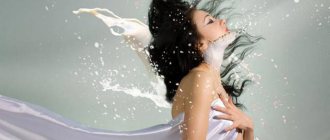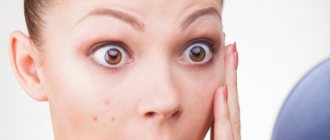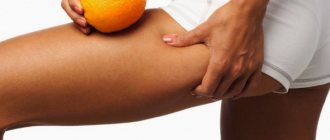Home » Traditional recipes
Folk recipes
Author Natalia Danchishak Reading time 8 min. .3k. Published 08/31/2016
Birch tar is a product of distillation of birch bark, leaves and buds. This product is dark in color with a rich and not very pleasant smell, which, however, has many beneficial properties for the beauty and health of facial skin.
- Methods of use for beauty and health of the face
Ingestion - Use in its pure form (for acne)
- With store-bought cosmetic products
Cleanser
- Anti-wrinkle mask
- Ointment for scratches and wounds
- Tar soap (for skin diseases)
- Cleansing with cream mixture
- Mask for blackheads and pimples
- Lifting (for face, décolleté and neck)
The benefits of tar
Tar is obtained from birch bark. The wood is subjected to dry distillation, as a result of which complex chemical compounds break down into small ones: cresols, phenols, organic acids, resinous substances, etc. The composition has the form of a viscous liquid, which is subsequently amenable to fractional distillation to separate the technical material from the medical one.
Some components in tar are characterized by an aggressive effect, for example, cresols and phenols. Many will be surprised, but they are used to disinfect technical rooms and service tools. Therefore, it is strictly forbidden to apply pure tar to the skin, as this will lead to burns. In cosmetology and medicine, a diluted substance is used, for example, in the form of tar masks. However, the presence of aggressive chemicals in the composition does not negate the beneficial properties of tar. Even in ancient times, women used it in home cosmetology. The main properties of tar:
- drying;
- pain reliever;
- anti-inflammatory;
- antimicrobial.
The substance not only cleanses the skin, but also treats many diseases: dermatitis, fungal infections, parasitic infestations, hair loss, etc. Tar dries out acne, cleanses the skin, tightens pores, saturates cells with oxygen, and improves the regeneration process. Tar-based preparations treat burns, heal large wounds and minor scratches. In addition to cosmetology, tar is used in medicine to treat the following diseases:
- angina;
- chronic otitis;
- atherosclerosis;
- scabies;
- bronchial asthma;
- pathology of the rectum;
- psoriasis;
- gangrene;
- bedsores;
- frostbite of the skin, etc.
The smell of birch tar can hardly be called pleasant, but the benefits it brings are invaluable in comparison with this factor.
The use of tar in medicine and cosmetology
Tar is used externally and internally. In the second case, a solution of tar is used - a liquid with a specific odor, which is sold in pharmacies. Internal administration and dosage should be prescribed by a doctor, since the substance has contraindications and can cause allergies. With the help of tar water, our ancestors cleansed the body of toxins. Among supporters of traditional medicine, this method remains relevant. In this case, tar water is used: add 10 drops of a pharmaceutical solution to a glass of water and leave for two days. The product is taken daily, 2 tablespoons.
To treat skin diseases, such as scabies, sulfur-tar ointment is used. Wood resin in the ointment is used for insecticidal and disinfectant effects.
But most often tar is used in cosmetology. They treat acne and improve the appearance of the skin. The easiest way to treat rashes is to regularly wash your face with tar soap. Already from the first use, a positive effect is observed: the skin becomes soft and velvety. Regular washing neutralizes inflammatory areas, irritation and oily shine. The skin is cleansed and acquires a matte tint.
There are a large number of tar face masks that are prepared at home and do not require much expense. Depending on the composition, the masks are applied for 10-20 minutes. The main disadvantage of tar is its specific smell, which remains on the skin for a long time.
Important! If an allergic reaction occurs, use of the product must be stopped.
What it is?
Birch tar is formed as a result of the distillation of birch buds, wood and leaves. The substance has a viscous, oily structure and has a specific odor. The composition is enriched with many useful substances that are necessary for the human body.
Birch tar is a natural product that is widely used in traditional medicine and cosmetology as the most effective and safe remedy.
Recipes for effective tar masks
The skin of the face becomes velvety after the first experience of using a tar mask. After 2-3 applications, the skin rash goes away, the texture of the face is evened out, and the skin acquires a matte tint. Regular application of tar masks will lead to the following results:
- pores will narrow, blackheads will disappear;
- acne will go away within a week;
- inflammatory areas will disappear;
- redness will disappear, the skin will acquire a healthy matte shade;
- cellular respiration is normalized;
- expression and age wrinkles will be tightened.
Tar masks can be used by teenagers who suffer from acne. Contraindication for use is dry skin. Let's look at popular tar masks that have shown the greatest effectiveness.
Tar mask with soda
Before using the product, first steam the pores, so the beneficial substances will penetrate into the deep layers of the dermis and accelerate the appearance of the positive effect. Effect of the mask on the skin:
- cleans and disinfects;
- rejuvenates and softens;
- pulls up;
- like peeling, it eliminates roughness and unevenness;
- whitens (freckles, age spots become less noticeable);
- cleanses pores, restores water-alkaline balance.
| Ingredients | Preparation | Time of action |
| Soap shavings (10 g), soda and salt (half a teaspoon each). | Beat the soap into foam, add the remaining ingredients and mix well. | 10-15 minutes. |
Recommended frequency of use: 1 time per week. Before applying the product, be sure to thoroughly cleanse your skin.
Lifting mask
Action on the skin:
- reduction of wrinkles;
- pull-up;
- relief leveling;
- improvement of tissue regeneration;
- elimination of rashes and redness.
| Ingredients | Cooking method | Time of action |
| Tar soap shavings (10 g), sour cream or cream (one tablespoon each). | Beat the soap into foam and combine with one of the ingredients. | 15 minutes. |
Recommended frequency of use: once every 2 weeks. A lifting mask has a tightening effect; usually the product is applied before going out. In a few minutes, women will receive the effect of a salon lifting. Don't forget to apply moisturizer after removing the mask.
3. Tar mask for rashes with pumpkin and raw potatoes
Action of the mask:
- elimination of rashes, redness, inflammatory areas;
- improvement of tissue regeneration;
- refreshing and improving skin tone.
| Ingredients | Preparation | Time of action |
| Tar solution (0.5 tsp), raw potatoes and pumpkin (one tablespoon each). |
| 20 minutes. |
Recommended frequency of use: 1 time per week. Instead of a solution, you can use tar soap foam.
Mask against demodicosis
Demodicosis is caused by parasitism in the body of a pathogenic mite. Most often the disease is localized on the face. Birch tar is a remedy that parasitic ticks are afraid of. Tar cannot be applied in its pure form. The effect will be faster, but you may burn your skin. Ingredients for cooking:
- 0.5 teaspoon of metronidazole in powder form.
- a teaspoon of zinc paste;
- a few drops of liquid tar.
Mix the ingredients and apply for 60-90 minutes before bedtime. The longer the mask lasts, the faster the effect will occur.
Important! The mask is characterized by an unpleasant odor and greenish-brown color. When you first use it, you will want to wash it off as quickly as possible. But you shouldn't do this. The product should remain on the face for at least an hour. For complete recovery, the procedure is repeated for 10-15 days.
Mask made of tar and baby soap
Action of the mask:
- elimination of rashes and inflamed areas;
- tightening the skin and giving it elasticity;
- improvement of dermis color.
| Ingredients | Cooking method | Time of action |
| Foam of baby and tar soap in equal quantities. | Mix the ingredients. | 20 minutes. |
Recommended frequency of use: 1-2 times a week. To smooth out wrinkles and enhance the anti-inflammatory effect, you can add a pinch of table salt to the composition.
To avoid preparing the product every time, you can make soap at home. To do this, you need to grate a bar of baby soap and melt it for steam, then add 3 tablespoons of liquid tar and pour into molds. Cosmetologists recommend washing your face with this soap every day. This will avoid skin problems and keep it fresh.
Brightening masks for pigmented skin
Action on the skin:
- brightening and providing a matte skin tone;
- facial cleansing.
Mask with chamomile infusion:
| Ingredients | Cooking method | Time of action |
| Tar soap (10 g), chamomile decoction (1 tbsp). | Beat the soap shavings into a foam and combine with the broth. | 15 minutes. |
Recommended frequency of use: once every 2 weeks. Reviews say that after regular use, freckles and age spots become significantly lighter, and the dermis will take on a more matte hue.
Mask with cottage cheese and sour cream:
| Ingredients | Cooking method | Time of action |
| Tar soap (10 g), cottage cheese and sour cream (one tablespoon each). | Beat the soap into foam, add sour cream and cottage cheese and stir well. | 15 minutes. |
Recommended frequency of use: 1 time per week. After removal, the skin becomes soft and velvety.
7. Anti-inflammatory mask
Effect of tar mask:
- elimination of ulcers and minor rashes;
- improvement of the regeneration process;
- smoothing the skin texture;
- elimination of inflammatory areas and redness.
| Ingredients | Cooking method | Time of action |
| Tar soap foam and aloe juice in equal quantities. | Mix the ingredients well. | 20 minutes. |
Recommended frequency of use: 1-2 times a week. The mask is applied in 3 layers.
Blue clay mask and lotion
Action on the skin:
- cleansing;
- relieving inflammation;
- matting of the dermis;
- drying effect;
- smoothing the skin texture.
Preparation of the mask:
| Ingredients | Cooking method | Time of action |
| Blue clay (1 tbsp), liquid tar (10 drops), calendula tincture or sage decoction (1 tbsp). | Mix all ingredients thoroughly. | 15-20 minutes. |
Recommended frequency of use: 1-2 times a week. Reviews say that many are allergic to blue clay. Before use, be sure to do an allergy test.
Preparation of lotion:
| Ingredients | Cooking method | Time of action |
| Liquid tar (10 drops), two egg whites, castor oil (1 tsp). | 1. Mix the ingredients. 2. Pour into a glass container. 3. Close the lid tightly. 4. Leave for 2-3 days. | Wipe your face and do not rinse. |
Recommended frequency of use: up to 3 times a week. When the lotion infuses, shake it at least once a day.
9. Anti-aging masks based on tar
Action of the mask:
- rejuvenation and improvement of skin tone;
- lifting effect;
- elimination of inflammation and redness;
- improvement of skin color;
- elimination of facial and age wrinkles.
| Ingredients | Cooking method | Time of action |
| Honey (1 tbsp), tar solution (5 drops), peach oil (1 tsp). | Mix all ingredients well. | 10 minutes. |
Recommended frequency of use: 1-2 times a week. Many people online advise preparing masks with extra supplies. The product is placed in a glass container, tightly closed with a lid and sent to the refrigerator. However, cosmetologists do not support this method. Tar masks must be prepared from fresh ingredients before each application, otherwise the composition loses some of its beneficial substances. In this case, the efficiency decreases.
Masks for narrowing pores
Action of the mask:
- narrowing of pores;
- elimination of blackheads;
- brightening effect;
- increasing skin elasticity;
- improvement of complexion.
| Ingredients | Cooking method | Time of action |
| Egg white (1), soap foam (50 g). | Beat the egg whites and tar soap shavings into a thick foam using a mixer or fork. | 10 minutes. |
| White activated carbon (2 tablets), tar soap shavings (10 g). | 1. Moisten the sorbent and crush it finely with a fork. 2. Add warm water to the soap shavings and beat until foamy. 3. Combine ingredients | 10 minutes. |
Recommended frequency of use: 1-2 times a week. When washing off the mask, you can add lemon juice to cool water, which will tighten the pores.
Mask for oily skin
Action of the mask:
- normalization of sebum production;
- improvement of tissue regeneration;
- lifting effect;
- healing of small cracks;
- treatment of demodicosis;
- removing redness and rashes.
| Ingredients | Preparation | Application time |
| Soap foam (10 g), patchouli oil (5 drops), coffee (10 g). | Mix the ground grains with the rest of the ingredients and apply to the face. | 15 minutes. |
Recommended frequency of use: 1 time per week. Girls can prepare a mask without patchouli oil, since it is intended to smooth out wrinkles.
Recommendations for applying masks and precautions
To avoid problems after applying tar masks, adhere to the following:
- Do not use tar on dry skin. Application is allowed only if the soap is diluted with sour cream or cream.
- Do not use tar soap unless you have a skin problem.
- Before applying the mask, perform an allergy test.
- To effectively treat acne and other skin problems, initially steam your face to open the pores. This will speed up the effect of nutrients.
- Apply the product with massage movements. Pay attention to the method of application (one or more layers).
- Keep the mask on for 10 to 20 minutes (depending on the ingredients). Do not overexpose the product, otherwise an allergic reaction may occur.
- Wash off the masks first with warm water (to wash away all substances), then with cold water (to tighten the pores).
- After removing the product, moisturize your face with cream. This will relieve skin tightness and the unpleasant smell of tar.
- Do not use tar masks more than 2 times a week. There may be exceptions in special cases.
The tips described above will help you avoid unpleasant consequences, such as an allergic reaction.
Contraindications
No matter how useful the birch product is, there are a number of contraindications to its use, these are:
- Pregnancy and breastfeeding period;
- A febrile state accompanied by elevated body temperature;
- Chronic hypertension;
- Frequent pressure surges;
- Skin diseases during exacerbation;
- Kidney and liver dysfunction of varying severity;
- Excessive dry skin.
You cannot use tar if you have an individual intolerance to it. Before applying for the first time, it is recommended to conduct an allergy test.
Frequent use of tar is contraindicated. If you overuse the frequency of applying the composition to your face, this may result in the development of an allergic reaction. Incorrect use may cause side effects:
- Rash and itching on the skin;
- Redness;
- Dermatitis.
Despite the fact that tar copes well with various rashes, before using this method of treatment, you need to determine what leads to their appearance. If the cause is hormonal imbalance or diseases of the endocrine system, it is necessary to treat them with medication, because tar will only remove external manifestations. Without eliminating the root cause, the rashes will recur periodically.
How to get rid of acne using tar soap
Tar soap itself is good at fighting acne and rashes. It can be used as a daily cleanser. The product can replace expensive cosmetics that are full of chemicals. To get rid of rashes, follow these recommendations:
- Wash your hands with tar soap several times a day. Many people do not want to do this because of the unpleasant odor that remains on their hands after washing. However, this method will reduce the number of pimples, since most breakouts occur as a result of touching your face with dirty hands. Microbes enter the pores and form pustules.
- Wash your face with soap foam morning and evening. This will disinfect the skin and restore the skin. Those with dry skin with isolated rashes can apply soap foam pointwise. Please note that the skin is treated with foam, not soap. To prevent skin tightness, apply a moisturizer to your face after washing your face.
- Soap foam can be applied directly to blackheads and left overnight. In the morning, the rash will noticeably dry out and the healing process will speed up.
Important! If after using tar soap your acne problem has not been resolved, consult a dermatologist. Perhaps the persistence of the rash is caused by diseases of the internal organs.
Method – body milk
Not long ago my son suffered from a fungal disease. Amateur action, amateur action, but I gave preference to antifungal drugs, they made the sore go away faster. But the downside of the treatment was that while I was treating one place, the fungus popped up in another place, I wanted to get rid of it as quickly as possible, and then I came up with a method to use a preventative mixture on a clean, unaffected area, which is an excellent option for problem skin .
In the photo you see 2 products, they both moisturize and do not clog pores, at least on the body (you can choose any). I chose it specifically to moisturize. After the treatment, the skin was very flaky, and it was necessary that it help the affected areas cope with the disease, and nevertheless help the unaffected parts of the skin remain the same.
So, add 1 ml of tar to the body milk, you can also season this product with essential oils, for example a couple of drops of lemon essential oil, jojoba oil. Use every day on the affected part, such as the back.
Reviews of tar masks (from comments on the site)
Marina, 35 years old.
I made a whitening mask with tar and chamomile infusion. Not only did the rash disappear, but the pigment spot also lightened. It used to stand out a lot, but now it’s practically invisible. I really like that the skin is silky after the mask. I tried so many expensive chemical products, none of them had such an effect. Once again I am convinced that expensive does not mean good.
Victoria, 32 years old.
I washed my face with tar soap as a teenager. Adolescence was accompanied by a lot of terrible acne. At that time there was not much choice. Mom bought tar soap and made me wash my face every day. Since then, if a rash appears, I use only this product, but no longer just wash my face with soap, but add it to masks. It costs pennies, but is more effective than most expensive products.
